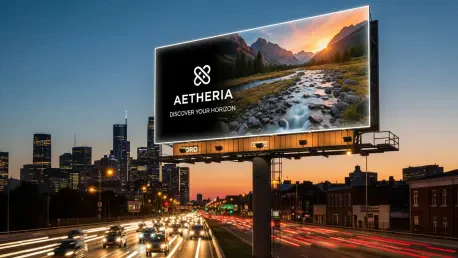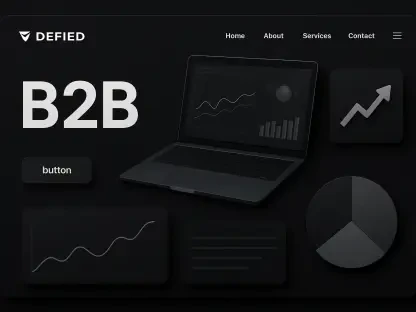Understanding the PDOOH Landscape
In an era where digital advertising dominates marketing budgets, Programmatic Digital Out-of-Home (PDOOH) advertising has emerged as a dynamic force within the broader Out-of-Home (OOH) sector, offering unparalleled flexibility to advertisers. This technology-driven approach automates the buying and selling of ad space on digital billboards, transit screens, and other public displays. As brands increasingly seek to integrate OOH into their omnichannel strategies, PDOOH stands out for its ability to deliver targeted, data-driven campaigns in real time, making it a cornerstone of modern digital marketing.
The ecosystem of PDOOH is shaped by major players such as demand-side platforms, supply-side platforms, and media owners, all leveraging advancements in automation and machine learning. These technological innovations enable precise audience targeting based on location, time, and behavior, transforming traditional billboards into interactive, measurable touchpoints. With data at the core of campaign planning, advertisers can now optimize their spending with granular insights, pushing the industry toward greater efficiency and effectiveness.
Yet, despite this rapid evolution, trust and transparency remain critical to sustaining growth. Market dynamics reveal a competitive landscape where advertisers demand accountability for their investments, especially as PDOOH campaigns become more complex. Building a foundation of credibility is essential to unlocking the full potential of this sector, ensuring that all stakeholders—advertisers, agencies, and media owners—can operate with confidence in a rapidly expanding digital environment.
The Trust Deficit in OOH Advertising
Historical Challenges and Industry Pain Points
For decades, the OOH advertising industry has grappled with a persistent lack of transparency, rooted in its dependence on self-reported data from media owners. Unlike other digital channels with standardized tracking mechanisms, OOH has historically lacked independent validation of campaign delivery, leaving advertisers uncertain about whether their ads reached the intended audience. This opacity has fostered skepticism, as brands often had to accept reported figures without concrete evidence to support them.
The advent of PDOOH, with its intricate metrics like impression multipliers and demographic targeting, has only amplified these concerns. Advertisers frequently question the accuracy of reported impressions and whether their campaigns performed as promised, especially when discrepancies arise between planned and actual delivery. Such uncertainties have eroded confidence, creating a trust gap that undermines the credibility of the medium and hinders deeper engagement from brands.
Market Impact and Growth Constraints
The trust deficit has tangible consequences, limiting investment in both traditional OOH and its programmatic counterpart. Without reliable data, many advertisers hesitate to allocate larger portions of their budgets to this channel, stunting its growth potential. Industry forecasts indicate that PDOOH could account for 16% of UK OOH ad spend by 2027, but this projection hinges on resolving transparency issues that continue to deter full-scale adoption.
If trust can be established through verifiable metrics, the potential for expansion is significant. Markets with higher levels of accountability have already shown increased ad spend, suggesting that addressing this pain point could unlock billions in untapped revenue. The challenge lies in creating systems that provide clear, independent proof of performance, thereby reassuring advertisers and encouraging them to view PDOOH as a reliable and impactful medium.
Veridooh’s Solution to Transparency Challenges
Addressing the core issue of trust head-on, Veridooh has positioned itself as a transformative force in the PDOOH space through its commitment to independent, real-time verification. This technology company has developed a platform that shifts the industry from a model of assumed delivery to one grounded in factual, verifiable data. By offering brands definitive proof of campaign performance, Veridooh is rebuilding confidence and fostering a more accountable advertising ecosystem.
Central to this innovation is the SmartCreative technology, a patented tracking URL that can be seamlessly embedded into any ad creative. This tool enables real-time monitoring of ad plays across screens worldwide, without the need for expensive hardware or complex integrations. Paired with the intuitive Veridooh dashboard, advertisers gain immediate access to detailed insights on impressions, creative performance, and screen locations, empowering them to make data-driven decisions during active campaigns.
What sets Veridooh apart is its ability to overcome technological and operational hurdles without disrupting existing workflows. The implementation process is remarkably simple, taking mere seconds to add the tracking URL, ensuring that agencies and brands can adopt the solution effortlessly. This user-friendly approach, combined with robust data capabilities, positions Veridooh as a scalable standard for verification, aligning PDOOH with the transparency levels expected in other digital advertising channels.
Regulatory and Compliance Considerations in PDOOH
Navigating the regulatory landscape of digital advertising is a critical aspect of PDOOH, where data privacy laws and industry standards shape campaign execution and reporting. Regulations such as the General Data Protection Regulation (GDPR) in Europe and similar frameworks globally impose strict requirements on how audience data is collected and used. These rules demand that advertisers and media owners maintain ethical practices, ensuring consumer information is handled responsibly in targeted campaigns.
Independent verification plays a pivotal role in meeting these compliance needs, offering a mechanism to validate campaign delivery while adhering to legal and industry guidelines. By providing a transparent, auditable record of ad performance, such solutions help build a credible ecosystem where all parties can operate with assurance. This accountability not only mitigates the risk of regulatory penalties but also strengthens partnerships between stakeholders through shared, trustworthy data.
Veridooh’s platform aligns closely with these standards, integrating features that support compliance while fostering trust. Its emphasis on verifiable metrics ensures that advertisers can confidently report outcomes to internal teams and regulatory bodies alike. As privacy concerns continue to influence advertising practices, tools like Veridooh’s are becoming indispensable in maintaining integrity and credibility across the PDOOH landscape.
The Future of PDOOH with Independent Verification
Looking ahead, the PDOOH sector is poised for significant transformation, driven by trends such as increased automation and the integration of real-time data analytics. These advancements enable more dynamic campaign adjustments, allowing brands to respond instantly to audience behaviors and market shifts. With its cutting-edge verification capabilities, Veridooh is well-positioned to lead this evolution, offering tools that enhance precision and accountability in an increasingly automated environment.
Potential disruptors, including changing consumer preferences and global economic fluctuations, could influence the trajectory of PDOOH adoption. However, the role of trust remains a constant factor in driving ad spend, as advertisers are more likely to invest in channels with proven reliability. Independent verification serves as a buffer against uncertainty, ensuring that even amidst external challenges, the industry can maintain momentum through credible performance data.
Innovations like Veridooh’s have the potential to redefine the future of OOH advertising by setting new benchmarks for transparency. As more brands and agencies recognize the value of verifiable metrics, market opportunities are likely to expand, attracting diverse industries to explore PDOOH as a viable medium. This shift toward a trust-based model could ultimately reshape how out-of-home advertising is perceived, positioning it as a cornerstone of integrated marketing strategies.
Conclusion
Reflecting on the insights gathered, it becomes evident that Veridooh plays a pivotal role in reshaping the PDOOH landscape through its groundbreaking approach to real-time verification. The staggering 4,014% ROI achieved in a UK case study underscores the tangible value of identifying and rectifying underdelivery, while market growth in regions like Australia highlights the broader impact of trust on industry expansion. These outcomes demonstrate how transparency acts as a catalyst for unlocking the medium’s potential.
Moving forward, stakeholders are encouraged to prioritize the adoption of independent verification solutions as a strategic imperative. By integrating platforms that offer clear, auditable data, advertisers and media owners can foster stronger collaborations and build resilience against market uncertainties. Embracing such tools promises not only to enhance campaign outcomes but also to position PDOOH as a trusted, high-impact channel for future marketing investments.
The journey ahead calls for a collective commitment to accountability, with an eye toward leveraging technology to address emerging challenges. As the industry continues to evolve, focusing on scalable, user-friendly verification systems stands out as a key step in sustaining growth. This proactive stance ensures that PDOOH can adapt to shifting dynamics, securing its place as an essential component of the global advertising ecosystem.









